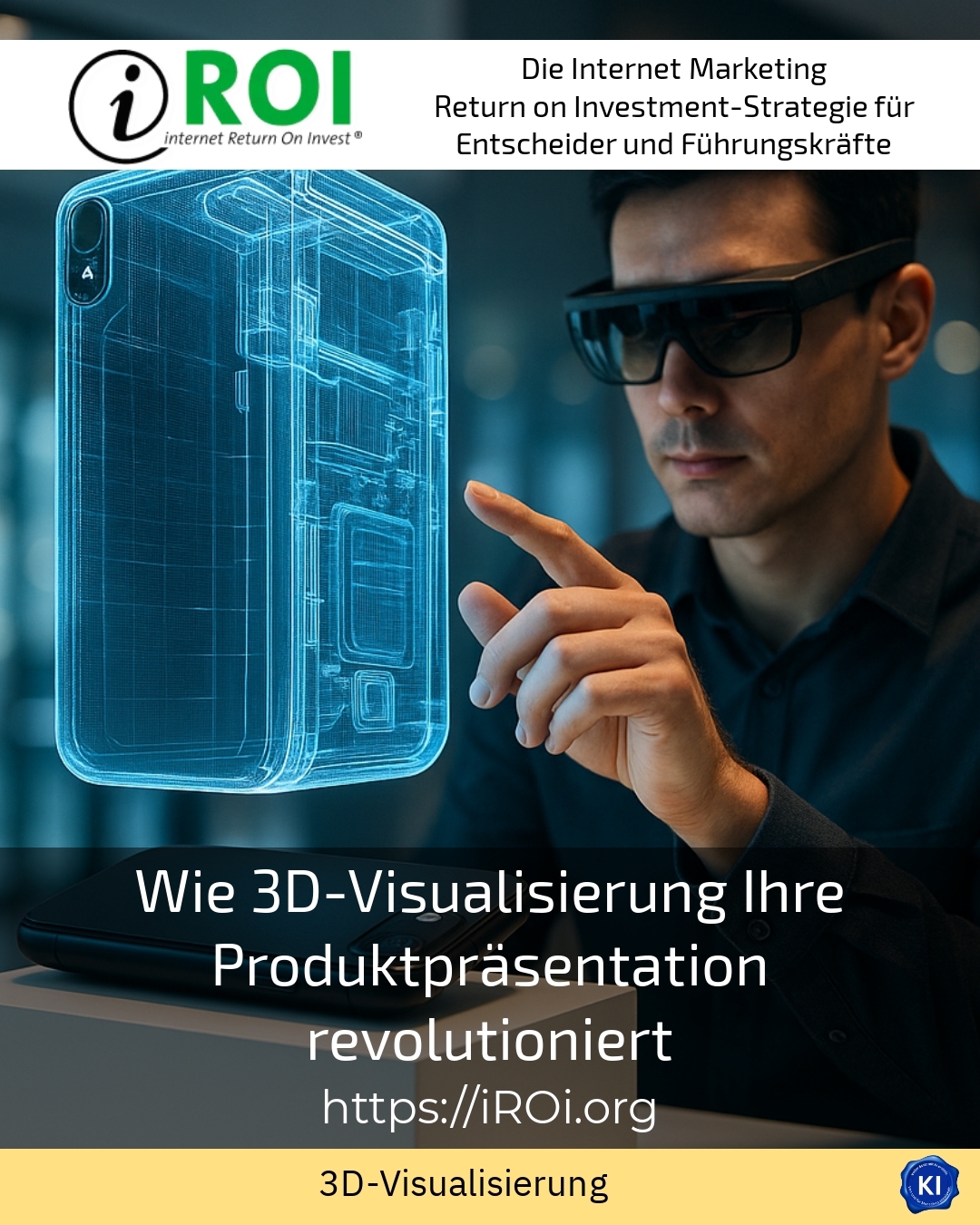3D visualisation has established itself as a pioneering tool when it comes to presenting products convincingly and in great detail. It offers a combination of photorealistic representation and interactive possibilities that far surpasses conventional forms of presentation and thus revolutionises the way products are perceived and decided upon. In this article, you will find out how 3D visualisation offers a wide range of advantages in product presentation and sustainably improves the customer experience with practical examples from various industries.
The versatility and flexibility of 3D visualisation
A key advantage of 3D visualisation is its flexibility. Companies can display different product variants with just a few clicks, from different colours and materials to modifications to the shape. Furniture manufacturers use this to present different types of fabric or wood digitally without having to produce physical samples. Manufacturers of technical devices also benefit by being able to experience material options and equipment packages virtually.
The automotive industry also uses 3D visualisation to show dynamic vehicle configurations. Prospective buyers can customise their dream car and view it in real time from all perspectives - an experience that goes far beyond static images.
BEST PRACTICE with one customer (name hidden due to NDA contract) A major automotive supplier used 3D visualisation to present product variants and new designs in detail. This enabled shorter coordination processes with customers and significantly reduced maintenance and development costs.
Cost efficiency and time savings through digital product presentation
Physical prototypes are often expensive and time-consuming. With 3D visualisation, these hurdles are eliminated because virtual models can be created and modified in the early stages of development. This means that new designs can be quickly adapted and optimised before the costs for physical prototypes are incurred. This not only saves time, but also a considerable budget.
Another advantage is evident in marketing measures: Elaborate photo shoots are often no longer necessary, as the 3D models are photorealistic and can be used in a variety of ways - on websites, in catalogues, at trade fairs or on social media.
BEST PRACTICE with one customer (name hidden due to NDA contract) A manufacturer of technical devices used 3D visualisation to digitally present its new product portfolio before launch. The virtual visualisation enabled customer requests to be integrated before series production, which significantly reduced the time to market.
Interactive customer experience through 3D visualisation
The 3D visualisation creates a particularly vivid product experience. Customers can view products from different angles, zoom in on details and even customise configurations. This not only promotes the understanding of complex products, but also the emotional connection.
Even products that require a lot of explanation become comprehensible and attractive thanks to interactive 3D visualisations. One example is medical technology manufacturers, who use this method to visualise their equipment and functions clearly. In the consumer goods sector, such representations help to show different colour combinations and variants without the need for physical prototypes.
BEST PRACTICE with one customer (name hidden due to NDA contract) A company from the furniture industry uses 3D visualisation to give customers the opportunity to virtually experience furniture in different colours, fabrics and arrangements. The result: higher customer satisfaction and fewer returns.
Effective communication and greater customer loyalty
The realistic and versatile visualisation makes it possible to communicate product ideas more clearly. Sales teams can inspire potential customers with concrete visualisations in the early project phases. This facilitates coordination, increases confidence in the product and boosts sales quotas.
In e-commerce, 3D visualisations create an immersive experience because customers can view the product from all sides. This added value is often reported as an impulse to buy, as uncertainties are reduced through detailed visualisation.
Practical tips for the successful use of 3D visualisation
In order for 3D visualisation to make the most of its strengths, companies should consider the following points:
- Use photorealistic models to convey realistic impressions.
- Use interactive elements to give customers the opportunity to personalise their product experience.
- Integrate the 3D visualisations into various marketing channels for consistent product presentation.
- Plan cooperation with professional providers at an early stage to ensure quality and efficiency.
- Offer variant management to demonstrate product modifications flexibly and quickly.
iROI-Coaching provides companies with comprehensive support for all 3D visualisation projects. In this way, the use of the technology is optimally integrated into business processes and the greatest possible benefit is achieved.
My analysis
3D visualisation is a powerful tool that changes product presentation from the ground up. It enables companies to present products more flexibly, more cost-effectively and with higher quality. Interactive and detailed visualisations improve the customer experience and strengthen customer loyalty. Numerous industries report significant benefits such as shorter development times and increased sales success. iROI coaching supports clients in utilising this potential in an individual and practical way.
Further links from the text above:
How 3D visualisation revolutionises your product presentation [1]
30 great 3D product presentation & visualisation videos [2]
Why 3D visualisation is a must for product presentations [3]
For more information and if you have any questions, please contact Contact us or read more blog posts on the topic internet Return on Investment - Marketing here.
















